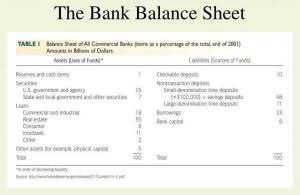What are generally accepted accounting principles GAAP?
The directors select the most appropriate regime based on the size and specific needs of the business. The Financial Reporting Council (FRC)—the UK’s independent regulator—sets and enforces UK GAAP to promote transparency and integrity in business. Below is a break down of subject weightings in the FMVA® financial analyst program.
Principle of Consistency
This ensures financial statements are comparable from one period to the next, allowing stakeholders to identify trends. If a company changes an accounting method, it must disclose the nature of the change, the reasons for it, and its effect on the financial statements. For example, if a business uses the First-In, First-Out (FIFO) inventory method, it must continue to use it in subsequent years or provide full disclosure if it switches to a different method. Publicly traded domestic companies are required to follow GAAP guidelines, but private companies can choose which financial standard to follow.
Contents
For example, if a company faces a lawsuit with a probable loss, it should record a liability for the estimated amount. However, if the company is the plaintiff, it should not record any potential gain until it is realized. At the state level, boards of accountancy require CPAs to understand GAAP for licensing exams, continuing education, and professional practice.
Today, the FASB remains responsible for setting, monitoring, and updating GAAP standards. Additionally, the Governmental Accounting Standards Board (GASB) oversees GAAP compliance for state what are generally accepted accounting principles gaap and local government organizations. Statements of Recommended Practice (SORPs) are recommendations for financial reporting that help those within specific industries.
GAAP vs. IFRS
GAAP in Canada encompasses a set of rules and guidelines that accountants must follow to present a true and fair view of a company’s financial position and performance. These principles ensure consistency, accuracy, and transparency in financial reporting across various industries in the United States. Public companies must follow GAAP when preparing their financial statements, which is also widely used in governmental accounting. GAAP, or Generally Accepted Accounting Principles, is a set of standards and guidelines for financial accounting that are used in the United States.
What is GAAP Compliance?
Always scrutinize financial statements, as there’s potential for manipulation within GAAP’s framework. The cost principle, also known as the historical cost principle, requires that assets be recorded on the balance sheet at their original purchase price. If a company buys a building for $500,000, it will remain on the books at that price, even if its market value increases years later. By following GAAP principles, companies can improve their decision-making processes while creating more value for shareholders. Ultimately, businesses’ adherence to GAAP contributes significantly to building trust with customers and establishing brand loyalty in today’s highly competitive environment.
This principle ensures that any significant events or transactions are recorded correctly within a particular accounting period so that they don’t affect future periods’ results. For example, if a business makes a large sale towards the end of December but doesn’t receive payment until January next year, it must be recorded as revenue in December since it was earned then. Non-compensation applies not only to expenses and revenues but also to different accounting methods used for similar transactions. Companies should avoid offsetting gains from one method using losses incurred through another method. The Accounting Standards Board (AcSB) plays a pivotal role in developing and maintaining accounting standards in Canada.
AI in Ecommerce Content Marketing: How Store Owners are Using AI in 2026
When companies use GAAP, investors can trust that the information they receive is accurate, allowing for clear and easy comparisons between multiple companies. The ease of comparison enables investors to make decisions based on an accurate understanding of organizations’ financial health. GAAP includes both strict rules and best practices, thereby providing both specific requirements and flexible guidance for atypical situations. These regulations ensure that investors can easily understand the financial health of each company, and easily compare companies before making investment decisions. The requirement to use GAAP depends on whether a company is publicly or privately held.
These principles ensure consistency and accuracy in financial reporting, making it easier for investors and other stakeholders to understand and compare financial information across different companies. GAAP is built on core principles guiding the preparation and presentation of financial statements. The principle of consistency requires companies to use the same accounting methods over time, enabling stakeholders to compare financial statements accurately. For instance, switching from the straight-line method to the declining balance method for depreciation without proper disclosure could mislead investors about a company’s financial health. It’s a comprehensive framework of guidelines, principles, and standards governing how publicly traded companies prepare and present financial information. Nonprofits and private businesses use GAAP accounting to standardize bookkeeping practices or meet stringent reporting requirements.
- Consider a Canadian software company that sells licenses and provides ongoing support.
- GAAP provides these stakeholders with a standardized framework that enhances the reliability, comparability, and consistency of financial statements across different companies and industries.
- The Principle of Continuity encourages companies to adopt sustainable business practices by considering environmental and social factors that may impact their operations over time.
- GAAP is a set of detailed accounting guidelines and standards meant to ensure publicly traded U.S. companies are compiling and reporting clear and consistent financial information.
GAAP vs IFRS: Understanding the differences
- These principles cover a wide range of topics including revenue recognition, inventory valuation, depreciation methods, and more.
- They form the bedrock of GAAP, ensuring the financial statements of companies are reliable, comparable, and transparent, thereby facilitating better decision-making by investors, creditors, and other stakeholders.
- The most significant difference between the two frameworks lies in their underlying philosophy.
- Multiple parties can have a variable interest in a VIE; however, only one party can be identified as the primary beneficiary.
- GAAP is the set of standards and practices that are followed in the United States, but what about other countries?
Financial statements prepared under this principle will provide users with reliable information about a company’s performance over time. In Canada, GAAP is closely aligned with IFRS for publicly accountable enterprises. However, there are notable differences between IFRS and ASPE, which is used by private enterprises.









